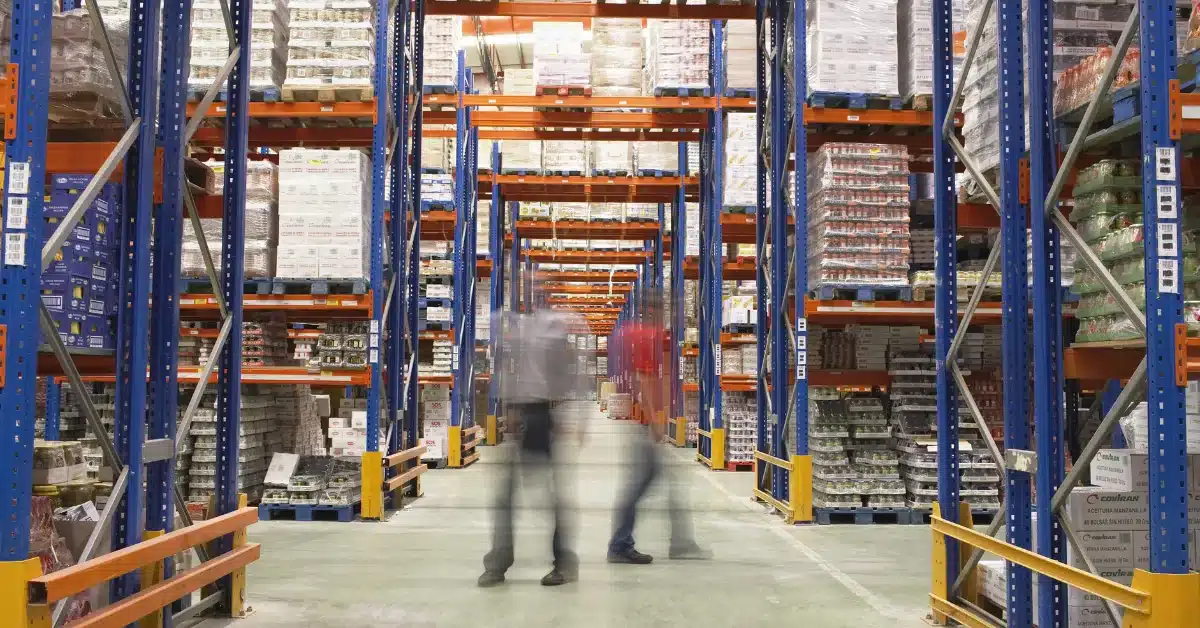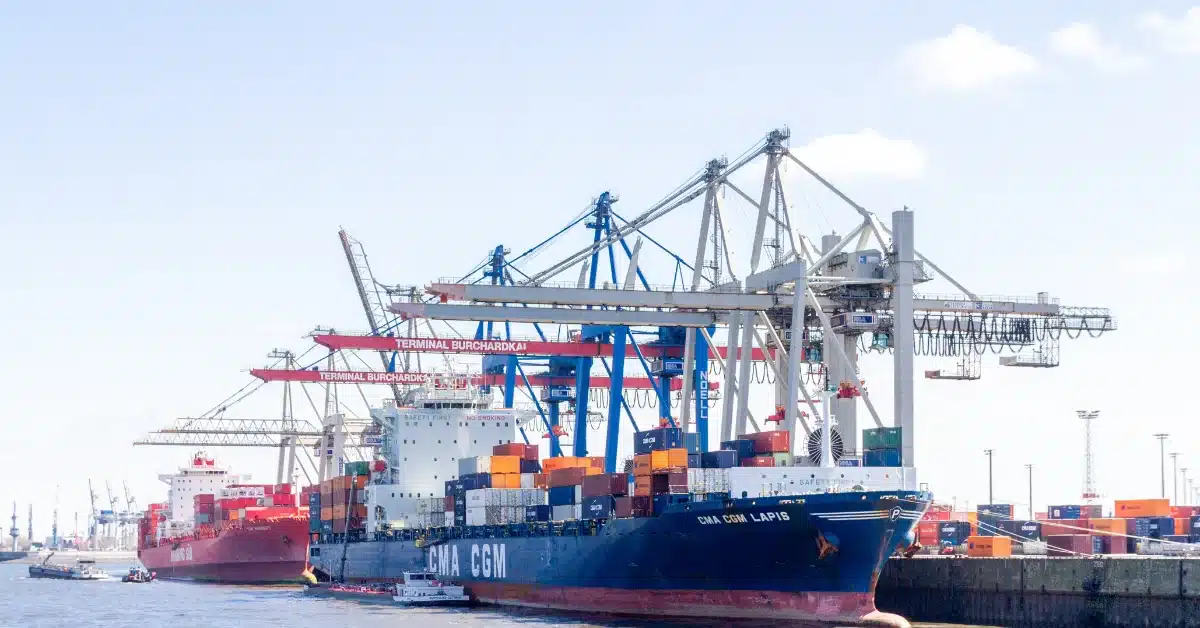Why Warehousing is a Game-Changer for Your Business
Table of Contents
- Why Warehousing is a Game-Changer for Your Business
- Introduction to Warehousing and Distribution Services
- What Are Warehousing and Distribution Services?
- Types of Warehousing Solutions
- The Role of Distribution Services in Supply Chain Management
- How Warehousing Improves Supply Chain Efficiency
- Challenges Facing Warehousing and Distribution Services
- Future Trends in Warehousing and Distribution Services
- Conclusion
- FAQ Section
- Introduction to Warehousing and Distribution Services
Introduction to Warehousing and Distribution Services
In today’s fast-paced global economy, businesses need efficient and reliable logistics solutions to meet growing customer demands. Warehousing and distribution services play a pivotal role in supply chain management, ensuring that goods are stored, handled, and delivered seamlessly from manufacturers to end consumers. Whether it’s inventory management, order fulfillment, or last-mile delivery, these services are essential for maintaining operational efficiency and customer satisfaction.
For businesses of all sizes, leveraging warehousing and distribution services can help streamline operations, reduce costs, and enhance scalability. This guide delves into the key aspects of warehousing and distribution, exploring how they work, their benefits, types, challenges, and future trends.
What Are Warehousing and Distribution Services?
Warehousing services refer to the storage of goods before they are distributed to customers or retailers. It involves not only storing goods but also managing inventory, safeguarding products, and handling tasks like packaging, labeling, and quality checks. Warehousing can be done in various facilities, including public, private, and third-party logistics (3PL) warehouses.
Distribution services, on the other hand, cover the movement of goods from warehouses to their final destination. This may involve order fulfillment, freight transportation, and last-mile delivery. Distribution centers ensure that the right products are delivered to the right place, at the right time, with minimal errors.
Key Functions of Warehousing and Distribution:
- Storage: Safekeeping of inventory until required for distribution.
- Inventory Management: Monitoring stock levels to prevent overstocking or stockouts.
- Order Fulfillment: Picking, packing, and shipping orders.
- Transportation: Moving goods from the warehouse to retailers or end customers.
- Reverse Logistics: Handling returns and recycling.
Warehousing and distribution are integral to supply chains, allowing companies to focus on production and sales while their logistics needs are taken care of by specialized facilities.
Types of Warehousing Solutions
The type of warehousing a business needs depends on its size, industry, and logistical requirements. Let’s explore the main types of warehousing solutions:
1. Public Warehousing
Public warehouses are third-party storage facilities available for businesses on a short- or long-term basis. These warehouses are ideal for small and medium-sized businesses that need flexible storage options without investing in their own facility.
Benefits:
- Flexible rental terms.
- No need for capital investment.
- Suitable for seasonal inventory changes.
2. Private Warehousing
Private warehouses are owned and operated by individual companies, offering complete control over operations. Large businesses with high storage needs often use private warehousing to manage their inventory more effectively.
Benefits:
- Full control over storage and inventory.
- Customizable to business needs.
- Enhanced security and control.
3. Third-Party Logistics (3PL) Warehousing
3PL providers offer a comprehensive solution that includes warehousing, inventory management, and distribution. They manage all logistics processes, allowing businesses to outsource their supply chain management entirely.
Benefits:
- Scalability for growing businesses.
- Cost-effective for logistics outsourcing.
- Expertise in warehousing and transportation.
4. Cold Storage Warehousing
Cold storage is essential for perishable goods such as food, pharmaceuticals, and flowers. These warehouses maintain temperature-controlled environments to preserve the quality and shelf life of products.
Benefits:
- Temperature control for sensitive items.
- Ensures product integrity and safety.
- Suitable for food and pharmaceutical industries.
5. Cross-Docking Facilities
Cross-docking is a process in which products are unloaded from inbound transportation and loaded directly onto outbound vehicles, minimizing storage time. This method speeds up delivery and reduces storage costs.
Benefits:
- Faster delivery times.
- Reduced inventory holding costs.
- Suitable for time-sensitive products.
Case Study:
A small e-commerce business used a 3PL warehouse to handle its storage and distribution. By outsourcing these services, the company was able to focus on growing its customer base without the logistical burden. This move reduced operational costs by 25% and improved delivery times by 30%.
The Role of Distribution Services in Supply Chain Management
Distribution services are the bridge between production and the consumer, ensuring that products reach their final destination quickly and efficiently. The role of distribution in supply chain management is critical, as it impacts delivery times, customer satisfaction, and overall logistics costs.
Key Elements of Distribution Services:
- Order Fulfillment: Picking and packing products for delivery.
- Freight Transportation: Moving goods from warehouses to retailers or customers via road, rail, sea, or air.
- Last-Mile Delivery: The final leg of the supply chain where products are delivered directly to customers. This is often the most expensive and time-consuming part of the distribution process.
Reverse Logistics
In addition to delivering goods, distribution centers also handle reverse logistics, including returns, exchanges, and recycling of products. Efficient reverse logistics can enhance customer satisfaction and reduce environmental impact.
Example:
Amazon’s distribution network is known for its efficiency, particularly in last-mile delivery. By using strategically placed distribution centers and advanced technology, Amazon has been able to offer same-day and next-day deliveries to millions of customers worldwide.
How Warehousing Improves Supply Chain Efficiency
Warehousing plays a crucial role in improving supply chain efficiency by ensuring goods are stored, managed, and dispatched in an organized manner. Here’s how effective warehousing enhances efficiency:
1. Improved Inventory Management
With real-time inventory tracking and management systems, businesses can monitor stock levels accurately. This reduces the risk of overstocking or running out of products, helping companies save on inventory costs.
2. Just-in-Time (JIT) Systems
JIT inventory systems allow businesses to receive goods only as they are needed, reducing the need for large storage spaces and minimizing waste.
3. Warehouse Automation
Modern warehouses are increasingly adopting automation technologies, such as robotics and AI-powered systems, to streamline operations. Automated picking and packing systems can significantly reduce human errors and increase processing speed.
Example:
A large e-commerce company implemented warehouse automation to handle a high volume of orders during peak seasons. This reduced order processing time by 40% and increased accuracy by 20%.
4. Reduced Lead Times
Efficient warehousing reduces the time between receiving orders and dispatching products, allowing companies to fulfill customer requests faster.
5. Lower Operational Costs
By improving inventory management and reducing lead times, businesses can lower their operational costs. This is especially beneficial for industries with high inventory turnover.
Challenges Facing Warehousing and Distribution Services
Despite the benefits, warehousing and distribution face several challenges:
1. Inventory Mismanagement
Without proper tracking and management systems, businesses risk losing inventory or mismanaging stock levels.
2. Space Limitations
As businesses grow, the need for additional storage space becomes critical. Warehousing facilities may struggle to keep up with increasing demand.
3. Delays and Transportation Issues
Delays in transportation, whether due to weather conditions or logistical inefficiencies, can disrupt the entire supply chain.
4. Rising Demand for Cold Storage
With the increase in demand for fresh and frozen foods, the need for cold storage solutions is growing. However, setting up and maintaining cold storage warehouses is costly.
Solutions:
- Implement warehouse management systems (WMS) for real-time tracking.
- Outsource logistics to 3PL providers to optimize space and reduce costs.
- Use advanced forecasting tools to predict demand and adjust inventory accordingly.
Future Trends in Warehousing and Distribution Services
As the logistics industry evolves, several trends are shaping the future of warehousing and distribution:
1. AI and Machine Learning
Artificial intelligence (AI) and machine learning are revolutionizing warehousing by improving demand forecasting, inventory management, and order accuracy.
2. Drones and Robotics
Robots are increasingly being used for picking, packing, and sorting goods in warehouses, while drones may soon be used for last-mile delivery.
3. Sustainable Warehousing Practices
Many companies are adopting eco-friendly practices in their warehouses, such as using solar power, reducing packaging waste, and optimizing energy consumption.
Example:
A global retailer implemented AI-powered demand forecasting to predict customer preferences, resulting in a 15% reduction in inventory costs and a 20% improvement in order accuracy.
Conclusion
Warehousing and distribution services are essential for businesses looking to streamline their supply chains and meet customer demands efficiently. By leveraging the right warehousing solutions, such as 3PL, cross-docking, or cold storage, businesses can optimize inventory management, reduce costs, and improve delivery times. As the logistics industry continues to evolve, adopting advanced technologies like AI and robotics will be key to staying competitive.
FAQ Section
- What are warehousing and distribution services? Warehousing involves the storage and management of goods, while distribution services focus on the delivery of products to customers or retailers.
- How do 3PL warehousing services benefit businesses? 3PL providers manage logistics, including warehousing, inventory, and shipping, allowing businesses to focus on their core operations.
- What is cross-docking in warehousing? Cross-docking involves unloading goods from one vehicle and loading them directly onto another, minifgmizing storage time and speeding up delivery.
- How can warehouse automation improve efficiency? Automation reduces errors, increases processing speed, and enhances overall warehouse efficiency through the use of robotics and AI-powered systems.
- What are the key challenges in warehousing? Challenges include inventory mismanagement, space





